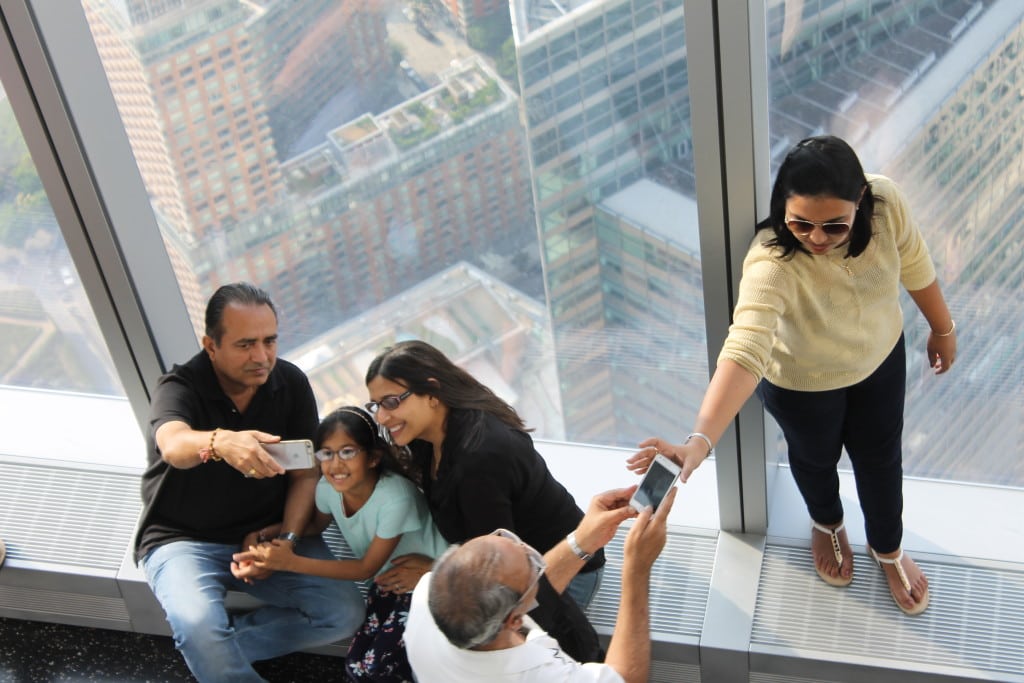Skift Take
International travelers have fewer incentives to spend their hearts out on vacations to the U.S. because of the stronger U.S. dollar. We'll see if fewer of them actually visited in 2015 later this year when visitor totals are released.
International visitors to the U.S. spent nearly $4 billion less last year than they did in 2014 as many foreign currencies lost strength against the U.S. dollar, marking the first time since 2009 that such spending was smaller than the previous year.
The $216.8 billion international travelers spent in the U.S. last year is a 1.8 percent decrease from the $220.7 billion international visitors spent in 2014, according to data from the U.S. National Travel and Tourism Office. This comes as growth in international arrivals to the U.S. slowed throughout 2015 and as international visitors spent $5 billion less on airfares in 2015 than they did the year before (an 11.1 percent decrease). Only U.S. carriers are included in this data but a U.S. Department of Commerce report found that these legacy U.S. carriers still dominate international traffic into and out of the U.S.
In-destination spending was also down 2.2 percent year-over-year for categories such as lodging, food, souvenirs, entertainment, and local transportation. Official international arrival totals for 2015 haven’t been released but lower spending totals shouldn’t imply fewer international travelers visited the U.S., according to Brand USA, the public-private organization charged with attracting international travelers to the U.S.
“The main reason for [the decrease in spending] was the 11 percent drop in passenger fares, which low fuel prices helped drive,” said Carroll Rheem, Brand USA’s vice president for research and analytics. “It’s also important to note, in the second half of 2015, the power of the dollar increased materially against a number of key currencies – including the Canadian dollar, Mexican peso, Euro, Brazilian real and Australian dollar. The decline in travel spending (-2 percent) is not indicative of less demand for travel to the United States. If measured in their respective local currencies instead of the dollar, spending would have actually increased.”
February 2015 was the only month without negative growth — spending receipts were up four percent that month over February 2014.
One bright spot: Medical and education-related tourism was up by nearly 10 percent year-over-year and international travelers spent some $45.6 billion on wellness experiences, medical procedures and tuition and fees for foreign students studying at American universities. This category had the largest year-over-year increase among the categories (see below) the U.S. National Travel and Tourism Office breaks out, including international travelers’ receipts for lodging, food and airfare.
International Visitor Spending in the U.S. in 2015 ($ Billions)
| International Traveler Receipts in U.S. | January-December 2014 | January-December 2015 | Year-Over-Year Change |
|---|---|---|---|
| Total Travel and Tourism-Related Exports | $220,756 | $216,867 | -1.80% |
| Travel Receipts (for all purposes including education) | $177,240 | $178,297 | 0.60% |
| Travel Spending | $135,723 | $132,685 | -2.20% |
| Medical/Education/Workers Spending | $41,517 | $45,612 | 9.90% |
| Passenger Fare Receipts* | $43,516 | $38,570 | -11.40% |
*Only U.S. carriers are included in this data.
Source: U.S. National Travel and Tourism Office
The Daily Newsletter
Our daily coverage of the global travel industry. Written by editors and analysts from across Skift’s brands.
Have a confidential tip for Skift? Get in touch
Tags: ntto, skiftstats, tourism
Photo credit: International tourists checking out the views at the 1 World Trade Center Observatory in New York City. Dan Peltier / Skift
